The fungus on the fingers of the legs is a problem that is disturbed by many.Itching, burning and ugly type of skin and nails are just a small part.The disease is dangerous with complications that are even harder to cure.At the same time, it is possible to deal with the problem if you seriously treat fungal infection (mycosis).
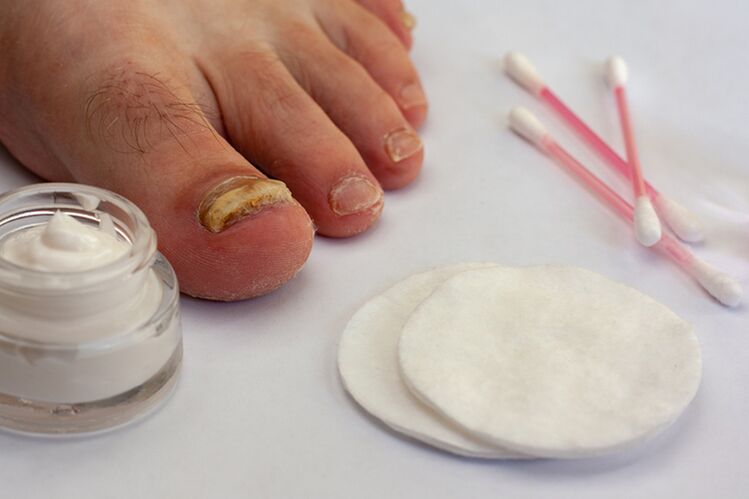
Why the fungus occurs on the foot?
Fungi is one of the infectious agents that affect the skin.These are difficult and extremely persistent microorganisms.Therefore, fungal diseases require a serious and integrated approach to treatment.
Fungi have their favorite habitats on the skin.Above all, the skin of the toes and nails.The reason for this is understandable - the legs are usually inside the shoe, within which a lot of moisture and dirt accumulates and very hot.Therefore, fungi on the feet have many foods and a favorable microclimate for reproduction.Certain types of complex fungi often affect the skin, and other types of fungi, such as yeast and mold, prefer nail plates.Perhaps the simultaneous infection with a variety of mushrooms at the same time.
Contribute to the development of fungi on your fingers:
- reduced local and general immunity;
- poor foot hygiene;
- unpleasant and crowded shoes;
- an irregular change in socks or stockings;
- wearing socks or wearing synthetic materials that do not pass through the air;
- regular hypothermia or overheating of legs;
- circulatory disorders in the legs;
- varicose veins;
- Chronic disease of the cardiovascular system, diabetes mellitus;
- long treatment with antibiotics;
- increased sweating of the legs;
- lack of vitamins and minerals in the body;
- mechanical damage to the skin, trauma of corn, legs;
- Excessive physical weight on the legs;
- The legs of the legs are an irregular hairdresser.
The most important of these factors is reduced immunity and blood circulation in the legs.Decrease in immunity may occur for various reasons.Usually these are severe chronic diseases, primarily infectious.In addition, immunity may be reduced due to HIV and can take immunosuppressants with cancer.Violation of blood circulation is no less important than the fingers of the legs in the case of blood vessels, blood, diabetes, and smoking.
Stopping Mycoses can develop in men and women.They appear more often in adults than in children.
Some types of mushrooms are constantly inhabited on the skin and are only activated under harmful conditions, such as the fungi of the Candida genus.And other species spread from person to person.The infection can occur when the gym, in a bath, is with a shower, if you do not use personal shoes at the same time.In addition, people who put on someone else's shoes or socks or allow other people to use them are at risk of significant infection.Often the infection occurs when the same towels, manicure supplies, etc.It is used, factors that increase the likelihood of infection on the skin surface, deformation of the nail plates.
Mycosis symptoms of fingers
The main symptoms of foot micosis are itching and burning.The redness of the skin, the small bubbles, the increased peeling and the skin of the skin, and the unpleasant odor can be observed.The first symptoms of skin mycosis can be confused with simple irritation and gratitude.
Symptoms of onychomycosis
The fungus can affect not only the skin but also the nails.The last version of micosis is called Onychomycosis.The main symptom of onychomycosis is a change in the structure and type of nail structure, increased fragility.The nail is yellow, furrows and cracks appear on its surface, the nail plate thickens and deformed.If you do not treat treatment, the nail will gradually dry out of the nail bed and collapse.
How does the mushroom look on your finger: photo
Photos should not be diagnosed in itself.The diagnosis should be made by a qualified dermatologist.

Only he can determine the type of fungus.This is likely to require not only external examination of the legs, but also a laboratory examination of skin scratches.
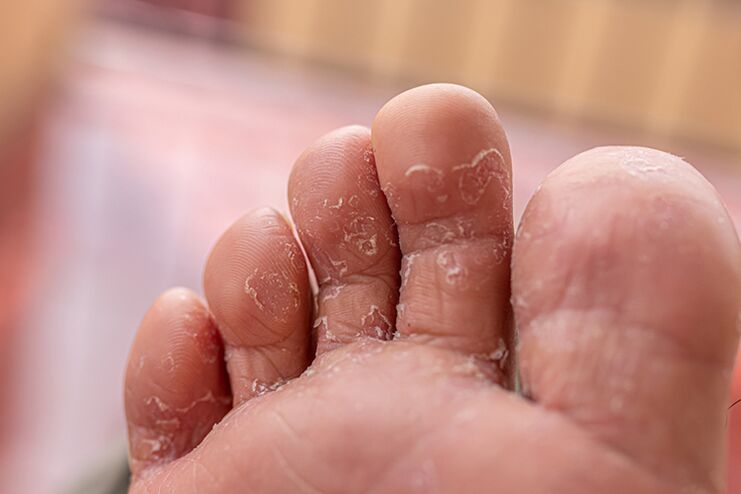
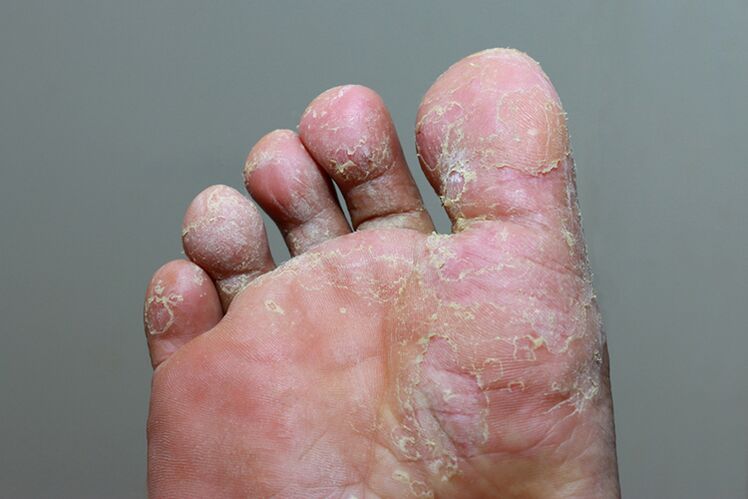
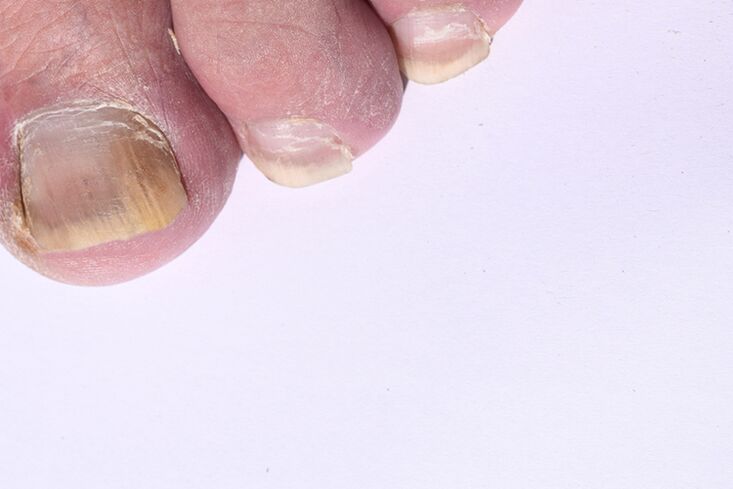
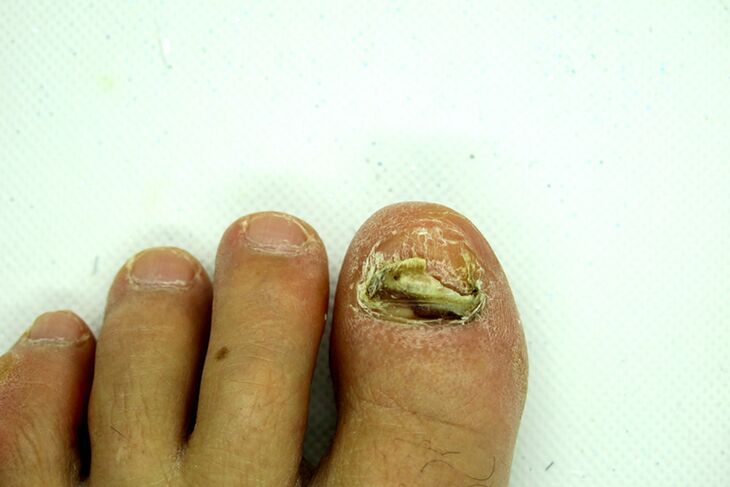
The presence of signs, at least remotely similar to photographs in photos, is concerned and consult a doctor.
The treatment of the disease is comprehensive and is done at home under the supervision of a doctor.

Mushroom on the little finger
The fungus can affect any finger on the foot.But the little fingers on the feet are the most vulnerable to infection.A small finger in tight shoes are often squeezed as torches occur on the skin and blood circulation is disturbed.With damage to the finger's finger, the disease develops very quickly and faster than any other nail.When infected with a small finger, the infection will touch the other fingers very quickly.
The fungus on the small finger can be treated in the same way as the fungus in other areas of the skin.With onychomycosis of the little finger's finger, the most demanding output can be to remove the nail plate.This operation does not cause much discomfort for the patient because the small finger nail grows rapidly.Although the nails do not grow again (this can last 3-4 months), antifungal drugs should be used to prevent re-infection.
How to treat fungal fingers?
The treatment of mycosis should begin with the first alarming symptoms.Above all, contact your dermatologist for diagnosis.Before starting therapy, the presence of mycosis and the type of pathogenic microorganisms should be determined.For this purpose, the doctor takes scraping from the skin or cuts off a piece of nail (with damage to the nail).Blood test, blood is donated to sugar.Mikosis of the foot skin should be distinguished:
- other infectious skin diseases;
- allergic reactions;
- Dermatoses caused by diabetes, vascular diseases, stress and neurons.
Local products (spray, ointments, creams) are most often used to treat mycosis of the legs.Only in severe cases can your doctor prescribe antimicotic tablets.The most commonly used tablets with fluconazole, itraconazole, terbinafine.
The treatment is based on the use of antimycotic agents.These types of drugs contain substances that kill fungal (fungicide) or stop their reproduction (antifungal).
What antimycotic agents are most often used:
- Clotrimazole,
- Ketoconazole,
- Terbinafin,
- Nistatin,
- Mikonazole,
- Environment,
- Fluconazole.
Local drugs with antibacterial, anti -inflammatory and keratolytic properties are also used.Antibacterial agents are prescribed when a suppuration occurs, ie the bacterium is attached to a fungal infection.Anti -inflammatory drugs cope well with discomfort - itching and burning.However, they do not affect the cause of the disease - pathogenic microorganisms.Keratolytic agents include zinc, sulfur and sulfur ointment.They accelerate the regeneration of skin tissues due to accelerating the epidermis of the dead epidermis.
Baths with antiseptic agents - potassium -permanganate, iodine, salt, dietary soda, boric acid are also used to treat stop mycosis.The baths are best done for 20 minutes before bedtime.To prevent infection with spores, healthy areas of the skin should be treated with chlorhexidine, iodine, hydrogen peroxide, potassium permanganate.Laches with antimycotic substances are used for thechomicosis therapy - LOOCERIL, EXODERIL, BATROPHEN.These varnishes should be applied to the nail plate.
Ointments and creams should be applied to pre -washed and clean skin with the frequency shown in the product instructions.The area of application of the ointment should be slightly larger than in the area of visible damage.To add the nail to the nail plate, the nail must be steamed, the uneven edges should be polished with a file, and the surface of the nail is destroyed with an alcohol -containing solution.
In folk medicine, herbs are used for the recovery of legs - chamomile, marigold, sage, St. John's Wort, mint, vinegar, onion and lemon juice.
What to do if the fungus does not hand over your finger?
Treatment of mycosis is a long and difficult process.Fungal microorganisms are very persistent and it is impossible to get rid of them in a few days.Occasionally, many months of careful therapy are needed.At the same time, it is impossible to break therapy for a single day.Treatment of onychomycosis can only be completed until a new healthy nail plate grows.
It is also important to consider other factors related to the development of the disease.Failure to comply with skin hygiene and the optimal temperature system can reduce all therapeutic efforts to zero.This means that you should regularly wash the skin of the foot, avoid overheating or hypothermia.It is also important to avoid mechanical damage to the skin, excessive leg loads, cuts and injuries.Excessive weight increases the pressure of the legs, so if you have fullness, think about weight loss.
If the patient is constantly wearing a fungal -infused shoe, there will be no strong medication here, as the place of dead microorganisms immediately occupies new ones.Therefore, you need to get rid of any factors that contribute to the re infection.You can't go to someone else's shoes, socks.The socks should be thoroughly washed and regularly changed.The inner surface of the shoe should be thoroughly sprayed with anti -inflicted agents.
In the case of stubborn mycosis, the general health should be analyzed.Perhaps this will help identify the causes of impaired immunity and blood circulation in the legs.Therefore, it is possible to perform full examination and exclude problems with the organs of the heart, blood, blood vessels, endocrine systems.
Finally, it is possible that microorganisms have simply developed resistance to the antimycotic agent used.Then you need to change the medicine.Systemic antimicotic drugs may be needed in the tablets.The dosage of medicines should be selected as a dermatologist.
























